
Cruis'n USA is an arcade racing game originally released in 1994. It was developed by Eugene Jarvis' company TV Games Inc., and manufactured by Midway Games. It is the first game in the Cruis'n series and features races set in locations across the continental United States.
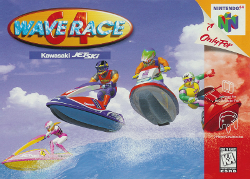
Wave Race 64 is a 1996 racing video game developed and published by Nintendo for the Nintendo 64. Gameplay involves the player racing on a personal watercraft on a variety of courses while successfully manoeuvring the vehicle around various buoys. A multiplayer mode where two players can compete against each other on a chosen course is also included. The game supports the Controller Pak, which allows players to transfer saved data from one game cartridge to another.
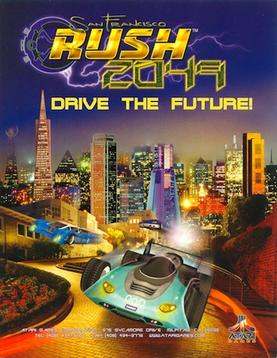
San Francisco Rush 2049 is a racing video game developed and manufactured by Atari Games for arcades. It was ported to the Nintendo 64, Game Boy Color, and Dreamcast by Midway Games West. The arcade machine was released in 1999; home versions followed in 2000 on September 7 for North America and November 17 for Europe. It is the third game in the Rush series and the sequel to San Francisco Rush: Extreme Racing and Rush 2: Extreme Racing USA. It is the last game in the Rush series to be set in the city of San Francisco and the last released on a Nintendo console. It also serves as the final game for the Atari Games label, which was retired shortly after the arcade release. The Dreamcast version was later re-released as part of Midway Arcade Treasures 3 for the PlayStation 2, Xbox, and GameCube and later for Microsoft Windows as part of Midway Arcade Treasures Deluxe Edition.

Automobili Lamborghini is a 1997 racing video game developed and published by Titus France for the Nintendo 64. It is a successor to Lamborghini American Challenge.

V-Rally is a racing video game developed by Infogrames Multimedia and released for the PlayStation console in 1997. The first game in the V-Rally series, it is based on the 1997 and 1998 World Rally Championship seasons, and features officially licensed cars and tracks inspired by real locations of rally events. Players drive rally cars through a series of stages spread over eight different locations, ranging from European countries like England, Spain or Sweden, to island countries such as Indonesia and New Zealand. As a simulation game, V-Rally places a strong emphasis on replicating the behavior physics of real cars and generally requires more practice than arcade-style racers.

Beetle Adventure Racing! is a racing game released for the Nintendo 64 in 1999. It was developed by Paradigm Entertainment and EA Canada, and published by Electronic Arts. Each vehicle in the game is a Volkswagen New Beetle, which was released the previous year. The gameplay involves racing other players on unlocked tracks, finding and destroying crates, and collecting colored ladybugs while battling other players. The single-player championship offers three circuits and a secret bonus circuit with new vehicles and tracks available upon completion.

MRC: Multi-Racing Championship is a racing video game developed by Genki and released for the Nintendo 64 in 1997. It was published in North America and Europe by Ocean and in Japan by Imagineer. The game is compatible with the Controller Pak and the Rumble Pak.
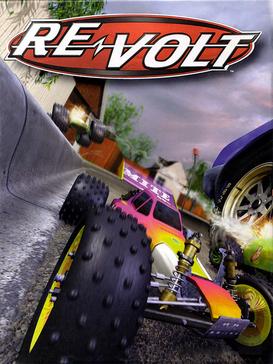
Re-Volt is a racing video game designed by Paul Phippen and Simon Harrison. It was developed by Acclaim Studios London and published by Acclaim Entertainment for Microsoft Windows, Nintendo 64, PlayStation and Dreamcast.

Top Gear Overdrive is a racing game released in 1998 for the Nintendo 64 and the sequel to Top Gear Rally. The game has support for high-resolution graphics if used with the Expansion Pak and features music from the band Grindstone.
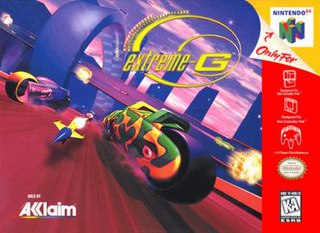
Extreme-G is a futuristic racing video game developed by Probe Entertainment and published by Acclaim Entertainment, featuring an original trance soundtrack. It was released for the Nintendo 64 in 1997, and was released in Japan on May 29, 1998. Despite the crowded field of Nintendo 64 racing games, Extreme-G was met with moderately positive reviews and was a commercial success. A sequel, Extreme-G 2, was released in 1998, followed by two additional games: Extreme-G 3 (2001) and XGRA: Extreme G Racing Association (2003). In 2024, the game was re-released through the Nintendo Switch Online + Expansion Pack through Throwback Entertainment, who purchased the rights to the game in 2006.

Lego Racers is a Lego-themed racing video game developed by High Voltage Software and published by Lego Media in 1999.

South Park Rally is a 2000 kart-style racing video game based on the American animated sitcom South Park published by Acclaim Entertainment and released for the PlayStation, Microsoft Windows, Nintendo 64, and Dreamcast. Gameplay follows the player in a competitive racing championship set in the fictional town of South Park. Players are given the options for multiplayer, arcade, or championship modes, but only the championship unlocks extra features. Competition begins in South Park's 1st Rally, a circuit race around four checkpoints in the downtown area of South Park. Races get gradually more diverse, with more locations, racers, and elements added as the game progresses.

Destruction Derby 64 is a vehicular combat racing video game developed by Looking Glass Studios and published by THQ, under license from Psygnosis. It is the third installment in the Destruction Derby series, released on 30 September 1999 in North America and 12 October 1999 in Europe for the Nintendo 64.

Twisted Edge Extreme Snowboarding, released as Twisted Edge Snowboarding in Europe, is a snowboarding video game released for the Nintendo 64, published by Midway in North America and by Kemco in Japan and Europe. It was released in Japan as King Hill 64: Extreme Snowboarding. Twisted Edge Extreme Snowboarding was not very well received commercially or critically.
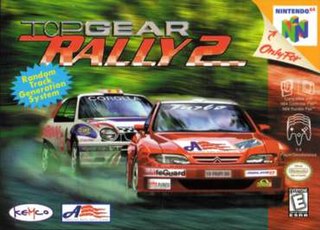
Top Gear Rally 2 is a racing video game developed by Saffire and released for the Nintendo 64 in 1999. It is a sequel to Top Gear Rally.

Cruis'n is a series of racing video games originally developed by Eugene Jarvis for Midway Games and published by Midway and Nintendo. The series distinguishes itself from other racing games with its over-the-top presentation and fast-paced gameplay, featuring a wide variety of vehicles and tracks based on a number of real world locations. The series debuted in North American and European arcades in 1994 with the release of Cruis'n USA, which, along with Killer Instinct, was advertised as running on Nintendo's Ultra 64 hardware. Two sequels followed, Cruis'n World and Cruis'n Exotica, which featured new vehicles and tracks. All three games were released for the Nintendo 64 as well, with Exotica also being released for the handheld Game Boy Color. The next game in the series, Cruis'n Velocity deviated from the traditional arcade gameplay of the series and was released for the Game Boy Advance.

Boss Rally is a 1999 racing game developed by Boss Game Studios and published by SouthPeak Interactive for Microsoft Windows. It is essentially a port of the Nintendo 64 game Top Gear Rally, with extra features such as more cars and tracks and a multiplayer mode that supports up to eight players.
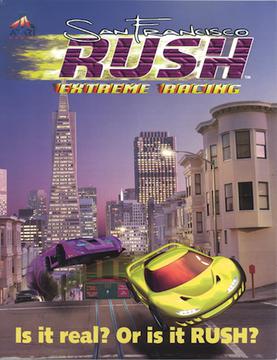
San Francisco Rush: Extreme Racing is a video game developed and published by Atari Games. This game was first released in arcades in 1996 and was ported to Nintendo 64 in 1997 and the PlayStation in 1998. San Francisco Rush: Extreme Racing is the first game in the Rush series.

Top Gear Pocket, known in Europe as Top Gear Rally, is a racing video game developed by Kemco and released for the Game Boy Color handheld console in 1999. A sequel, Top Gear Pocket 2, was released in 2000.
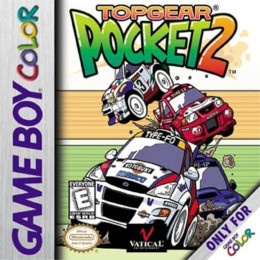
Top Gear Pocket 2, known in Europe as Top Gear Rally 2, is a racing video game developed by Kemco and released for the Game Boy Color handheld console, released on December 17, 1999 in Japan and in 2000 across other regions. It is a sequel to Top Gear Pocket.




















